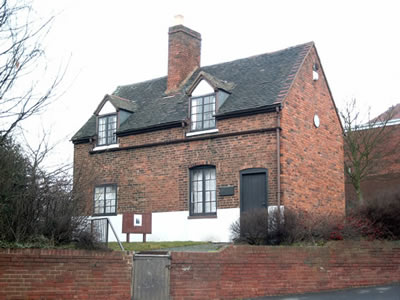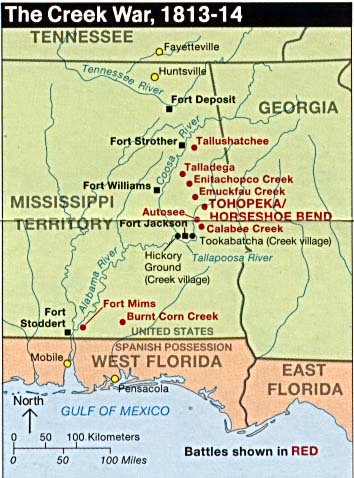|
Asbury Manual Labor School
Asbury Manual Labor School was an American Indian boarding school near Fort Mitchell, Alabama. Founded by the United Methodist Church, and named for Francis Asbury, it opened in 1822 and closed in 1830, when the Creek were forcibly removed to Oklahoma. History Fort Mitchell was a military fort and then a trading post, built in 1813, while the Creek War was going on. The reverend William Capers was sent there by the United Methodist Church to missionize among the Creek. Negotiations with the local chiefs led to his opening the Asbury Manual Labor School and Mission in 1822, one mile north of Fort Mitchell near Coweta, an Indian village; Creek children were to learn how to read and write and acquire other skills. The reverend Isaac Smith was the first teacher, and worked there until he retired in 1829; when the school opened it had a dozen students, and would average between 35 and 50 students. It quickly got three teachers and a 25-acre farm. It closed in 1830, when the Creek were fo ... [...More Info...] [...Related Items...] OR: [Wikipedia] [Google] [Baidu] |
American Indian Boarding School
American Indian boarding schools, also known more recently as American Indian residential schools, were established in the United States from the mid 17th to the early 20th centuries with a primary objective of "civilizing" or assimilating Native American children and youth into Euro-American culture. In the process, these schools denigrated Native American culture and made children give up their languages and religion. At the same time the schools provided a basic Western education. These boarding schools were first established by Christian missionaries of various denominations. The missionaries were often approved by the federal government to start both missions and schools on reservations, especially in the lightly populated areas of the West. In the late 19th and early 20th centuries especially, the government paid religious orders to provide basic education to Native American children on reservations, and later established its own schools on reservations. The Bureau of I ... [...More Info...] [...Related Items...] OR: [Wikipedia] [Google] [Baidu] |
Fort Mitchell, Alabama
Fort Mitchell is an unincorporated community in Russell County, Alabama, United States. The settlement developed around a garrisoned fort intended to provide defense for the area during the Creek War (1813–14). Fort Mitchell is about 10 miles south of Phenix City, Alabama and Columbus, Georgia; Fort Benning lies on the opposite side of the Chattahoochee River from Fort Mitchell. The community is the home of the Fort Mitchell National Cemetery, established in 1987 for interment of all US veterans. Landmarks * Fort Mitchell National Cemetery * Fort Mitchell Historic Site History A major United States fur trade factory was situated here between 1795 and 1807 before it was moved a few miles south to Hiawassee .Wesley, Edgar Bruce (1935). Guarding the frontier. The University of Minnesota Press, p. 38. Notable people * James Cantey, Confederate States Army brigadier general *Samuel Checote, Muskogee Creek, who was the first principal chief of the tribe, then located in I ... [...More Info...] [...Related Items...] OR: [Wikipedia] [Google] [Baidu] |
United Methodist Church
The United Methodist Church (UMC) is a worldwide mainline Protestant denomination based in the United States, and a major part of Methodism. In the 19th century, its main predecessor, the Methodist Episcopal Church, was a leader in evangelicalism. The present denomination was founded in 1968 in Dallas, Texas, by union of the Methodist Church and the Evangelical United Brethren Church. The UMC traces its roots back to the revival movement of John and Charles Wesley in England, as well as the Great Awakening in the United States. As such, the church's theological orientation is decidedly Wesleyan. It embraces liturgical worship, holiness, and evangelical elements. The United Methodist Church has a connectional polity, a typical feature of a number of Methodist denominations. It is organized into conferences. The highest level is called the General Conference and is the only organization which may speak officially for the UMC. The church is a member of the World Council of C ... [...More Info...] [...Related Items...] OR: [Wikipedia] [Google] [Baidu] |
Francis Asbury
Francis Asbury (August 20 or 21, 1745 – March 31, 1816) was one of the first two bishops of the Methodist Episcopal Church in the United States. During his 45 years in the colonies and the newly independent United States, he devoted his life to ministry, traveling on horseback and by carriage thousands of miles to those living on the frontier. Asbury spread Methodism in British colonial America as part of the Second Great Awakening. He also founded several schools during his lifetime, although his own formal education was limited. His journal is valuable to scholars for its account of frontier society, with references to many towns and villages in Colonial America. Biography Childhood and adolescence Francis Asbury was born at Hamstead Bridge, Staffordshire, England on August 20 or 21, 1745, to Elizabeth and Joseph Asbury. The family moved to a cottage at Great Barr, Sandwell, the next year. His boyhood home still stands and is open as Bishop Asbury Cottage museum. Soon a ... [...More Info...] [...Related Items...] OR: [Wikipedia] [Google] [Baidu] |
Creek War
The Creek War (1813–1814), also known as the Red Stick War and the Creek Civil War, was a regional war between opposing Indigenous American Creek factions, European empires and the United States, taking place largely in modern-day Alabama and along the Gulf Coast. The major conflicts of the war took place between state militia units and the "Red Stick" Creeks. The United States government formed an alliance with the Choctaw Nation and Cherokee Nation (the traditional enemies of the Creeks), along with the remaining Creeks to put the rebellion down. According to historian John K. Mahon, the Creek War "was as much a civil war among Creeks as between red and white, and it pointed up the separation of Creeks and Seminoles". The war was also part of the centuries-long American Indian Wars. It is usually considered part of the War of 1812 because it was influenced by Tecumseh's War in the Old Northwest, was concurrent with the American-British portion of the war and involved m ... [...More Info...] [...Related Items...] OR: [Wikipedia] [Google] [Baidu] |
Fort Mitchell National Cemetery
Fort Mitchell National Cemetery is one of the 130 United States National Cemeteries, located in Fort Mitchell, Alabama, adjacent to the state-owned and operated Fort Mitchell Park. It has interred approximately 5,000 individual since it officially opened its site in 1987. It serves as a national cemetery in Federal Region IV, to serve veterans residing in North Carolina, South Carolina, Georgia, Florida, Alabama, Tennessee, and Mississippi. History The Georgia Militia originally constructed Fort Mitchell in order to sustain a military presence in the area during the Creek War of 1813 to 1814. Shortly after the fort's completion, the Georgia Militia launched an attack against the British at Tuckabatchie and Hothlewali. The militia was ambushed and driven back to Fort Mitchell by a combined force of Creeks and British. Thereafter, until 1825, a small force continued to garrison at the fort. From 1817 to 1825, Fort Mitchell gradually emerged as a center of commerce for trade with ... [...More Info...] [...Related Items...] OR: [Wikipedia] [Google] [Baidu] |
Columbus State University
Columbus State University is a public university in Columbus, Georgia. Founded as Columbus College in 1958, the university was established and is administered by the Board of Regents of the University System of Georgia. History The university was first called Columbus College when it opened as a junior college in a hosiery mill in 1958. The college was staffed by fifteen faculty and staff and almost three hundred students attended courses in the first year. Columbus College relocated to the midtown area in 1963, building a campus defined by modern architecture on what was previously a dairy farm. The school was granted four-year status in 1965 with offerings of bachelor's and master's degrees. The first four-year class graduated in 1970. In 1996 the school was renamed Columbus State University as part of a program to restructure four-year institutions within the state's university system. The school now offers undergraduate and graduate programs in more than ninety academic ... [...More Info...] [...Related Items...] OR: [Wikipedia] [Google] [Baidu] |
1822 Establishments In Alabama
Eighteen or 18 may refer to: * 18 (number), the natural number following 17 and preceding 19 * one of the years 18 BC, AD 18, 1918, 2018 Film, television and entertainment * ''18'' (film), a 1993 Taiwanese experimental film based on the short story ''God's Dice'' * ''Eighteen'' (film), a 2005 Canadian dramatic feature film * 18 (British Board of Film Classification), a film rating in the United Kingdom, also used in Ireland by the Irish Film Classification Office * 18 (''Dragon Ball''), a character in the ''Dragon Ball'' franchise * "Eighteen", a 2006 episode of the animated television series ''12 oz. Mouse'' Music Albums * ''18'' (Moby album), 2002 * ''18'' (Nana Kitade album), 2005 * '' 18...'', 2009 debut album by G.E.M. Songs * "18" (5 Seconds of Summer song), from their 2014 eponymous debut album * "18" (One Direction song), from their 2014 studio album ''Four'' * "18", by Anarbor from their 2013 studio album '' Burnout'' * "I'm Eighteen", by Alice Cooper commonly r ... [...More Info...] [...Related Items...] OR: [Wikipedia] [Google] [Baidu] |




